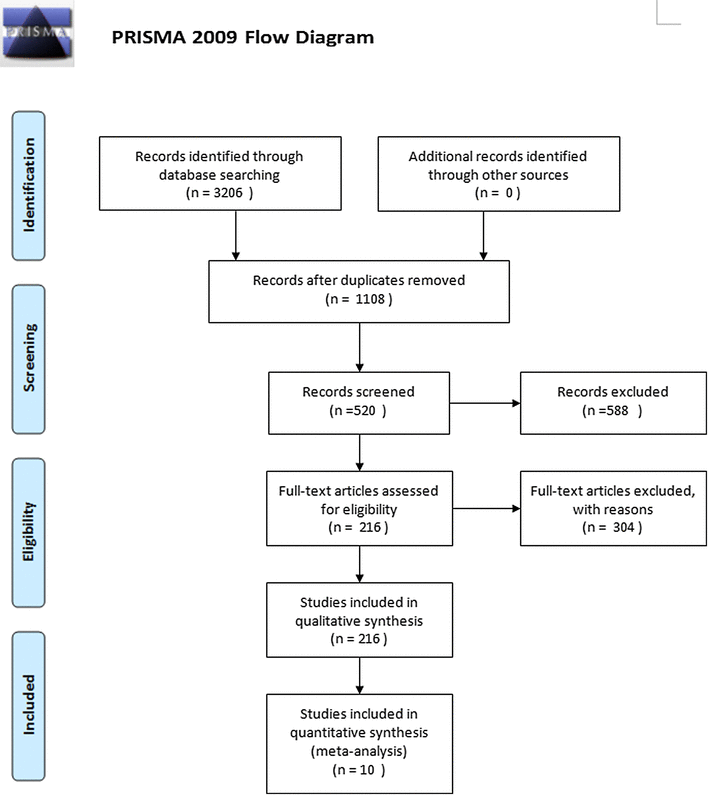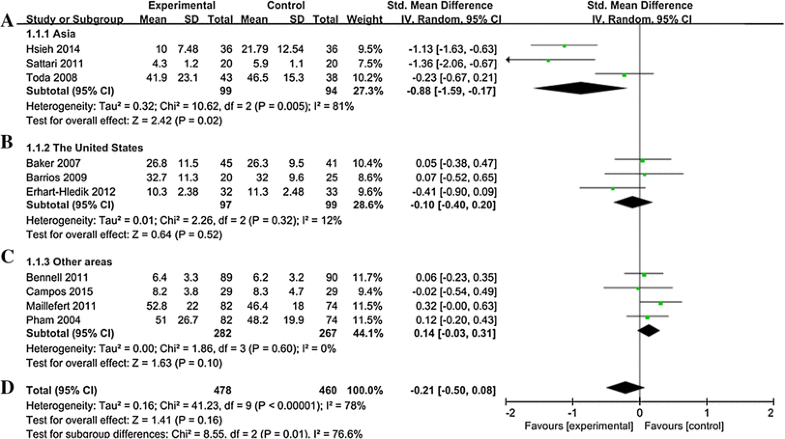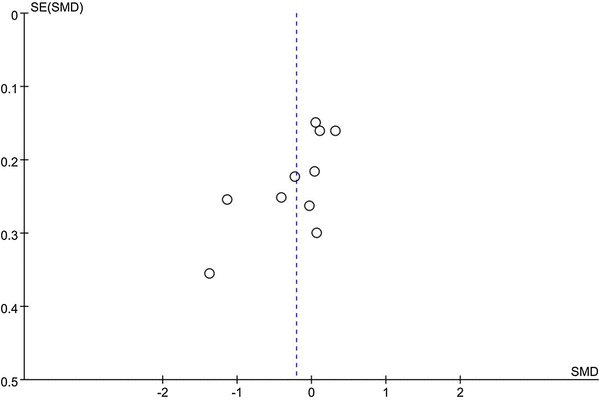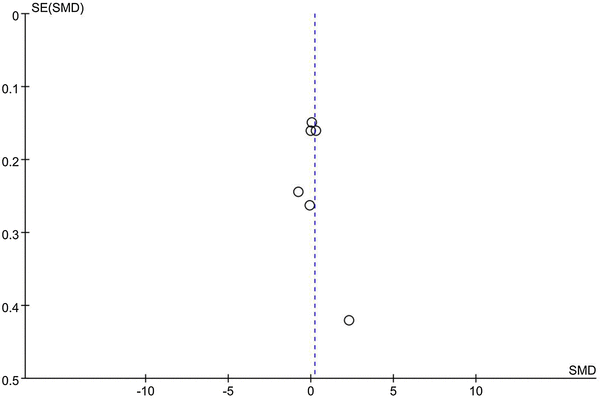Based on the pooled results of the current meta-analysis, lateral-wedge insoles as an independent treatment appeared to be ineffective in attenuating knee pain and function improvement for knee OA patients. Subgroup analysis demonstrated that lateral-wedge insoles had a beneficial effect in Asian population. However, the existence of significant heterogeneity among the included studies might weaken the statistical power of the conclusion.
Many previous evidence have been established and suggested that lateral-wedged insoles could result in physical functioning improvement in patients with knee OA, such as increasing walking speed and reducing knee adduction angular [28, 29]. Studies suggested that the relevant biomechanical effects, including medial knee-joint-space load, adduction moment, and varus malalignment, were reduced after lateral-wedge insoles treatment [4, 12]. However, other studies reported that wedges might influence the normal foot and biomechanics associated with ankle and foot, which might aggravate the OA symptoms [30, 31]. Our study failed to find significant function improvement in medial knee OA patients who received lateral-wedged insoles treatment. The biomechanical changes in patients were complex when using the insoles. Moreover, other concomitant variables, including foot position, the severity of knee OA, and walking habits, might influence the function assessment [32]. In addition, medial knee stability is an important characteristic of overall knee health and the accurate measurement of medial knee gap width, which is critical to in properly diagnosing and evaluating knee condition, may also be a affecting variable [33]. Therefore, a further multi-centre randomized controlled design studies after adjusting the complex factors were needed to verify the conclusion.
It has been proved that the biomechanics of insoles were reduced in lateral knee external movements during gait analyses [34, 35]. Arnold and his colleagues put forward that lateral-wedge insoles could cause small reductions in the first and second peaks [36], which implicated in both the development of knee pain and radiographic progression of medial knee OA in older adults [37, 38]. However, when we examined their effect on pain and function improvement, data from our meta-analysis demonstrated that lateral-wedge insole treatment was of benefit when treating medial knee OA for Asian. It seems that lateral-wedge insoles were ineffective at pain reduction among other races patients.
Some studies suggested that the treatment effect of lateral-wedge insoles for medial knee OA patients with younger age [39] and lower body weight [40] was more likely to be satisfactory. In the three articles enrolled Asian patients [24, 41, 42], the average age was 48, 64.3, and 61.0, respectively. By comparison with that of patients in the USA and other areas, the Asian patients seems to be younger. Body mass index (BMI) is used to categorize a person by weight. BMI can simply reflect systemic overweight and obesity. As shown in Table 1, BMI of Asian patients were significant lower than that of Uniter states and other countries. Although there is no exact BMI in one study (Sattari), it should be notice that the study has excluded patients with BMI greater than 30. Overall, a proper deduction showed that the BMI of Asian patients is more likely in normal range 18.5–24.9 according to WHO standard. However, BMI of American patients and other countries are obviously higher than 25, most of them very close to 30, and even up to 33. By and large, the average age and body weight of Asian patients are more positive for the therapeutic effects of lateral-wedge insoles. Until now, there was no evidence to demonstrate the relationship between race and role of lateral-wedge insoles on pain reduction. However, we recognized that different constitutions of body and living habits might be reasons for the different conclusions. Therefore, additional studies stratified by living habits and other factors affecting control balance were required.
Several meta-analyses on the evaluation of the role of lateral-wedge insoles in pain reduction among patients with medial knee OA have been conducted. Until now, we only have found four meta-analyses [14, 43, 44, 45] on this topic. Three articles [14, 43, 44, 45] concluded that there were no major beneficial effects with the use of lateral wedges among patients with medial knee OA, which was in line with the conclusion of our study. Only one article [44] suggested that lateral-wedged insoles were in attempts to reduce osteoarthritic pain of biomechanical origin. Only one article [14] assessed the statistical heterogeneity using Chi-squared test and Cochran’s Q statistic. Thus, whether lateral-wedge insoles is efficient in the treatment for medial knee OA remains controversial.
Several limitations should be noted in the meta-analysis. First, significant heterogeneity existed among studies. Despite performing sensitivity analysis to diminish the impact of heterogeneity, the effect of heterogeneity still cannot be eliminated completely. Subgroup analysis reminded us that race might be one reason causing heterogeneity. Moreover, based on characteristics of the enrolled studies, the following potential factors should also be taken into consideration: the quality of the trial and the study design, the type of treatment used in control group (no treatment and neutral insole), and the treatment duration. Second, recovery time more than 12 months, various treatment duration and short follow-up time in the meta-analysis might affect the compactness of the study.
Though for young Asian patients within normal BMI, to some extent, the lateral-wedge insoles seems to be helpful. However, there was no evidence to demonstrate the relationship between race and role of lateral-wedge insoles on pain reduction. In conclusion, current data demonstrate that lateral-wedge insoles appear to be ineffective at attenuating knee pain and function improvement.





